Archives
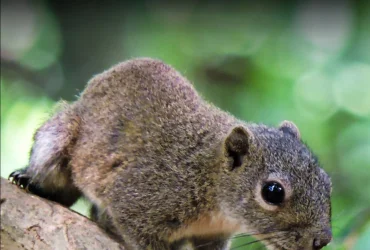 v10i1.250
v10i1.250ISSN: 1800-427X (print)
eISSN: 1800-427X (online)
DOI:10.47605/tapro.v10i1.250
Submitted date: 21 November 2020
Accepted date: 5 March 2021
Published date: 27 May 2021
Pp. 61–63, pl. 12.
Biofluorescence in the Sri Lankan House Gecko (Hemidactylus parvimaculatus)
Robert W. Mendyk*
*E-mail: rmendyk@auduboninstitute.org
In just the last five years, biofluorescence has been recorded in a growing number of reptiles. In lizards, ultraviolet-induced visible fluorescence is known to occur in several genera of chameleons as well as the nocturnal gekkonids Pachydactylus rangei, Cyrtodactylus quadrivirgatus, C. baluensis and Chondrodactylus bibronii. Under ultraviolet (UV) light, these gekkonids display varying degrees of bone-based fluorescence of the anterior skull and various skeletal elements including the vertebral column, limb bones, pelvis, lower jaw and toe articulations.
Section Editor: Ruchira Somaweera
eISSN: 1800-427X (online)
DOI:10.47605/tapro.v10i1.250
Submitted date: 21 November 2020
Accepted date: 5 March 2021
Published date: 27 May 2021
Pp. 61–63, pl. 12.
Biofluorescence in the Sri Lankan House Gecko (Hemidactylus parvimaculatus)
Robert W. Mendyk*
*E-mail: rmendyk@auduboninstitute.org
In just the last five years, biofluorescence has been recorded in a growing number of reptiles. In lizards, ultraviolet-induced visible fluorescence is known to occur in several genera of chameleons as well as the nocturnal gekkonids Pachydactylus rangei, Cyrtodactylus quadrivirgatus, C. baluensis and Chondrodactylus bibronii. Under ultraviolet (UV) light, these gekkonids display varying degrees of bone-based fluorescence of the anterior skull and various skeletal elements including the vertebral column, limb bones, pelvis, lower jaw and toe articulations.
Section Editor: Ruchira Somaweera
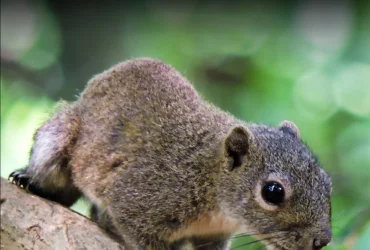 v10i1.249
v10i1.249ISSN: 1800-427X (print)
eISSN: 1800-427X (online)
DOI:10.47605/tapro.v10i1.249
Submitted date: 27 January 2021
Accepted date: 15 March 2021
Published date: 27 May 2021
Pp. 58–60, pl. 11.
First record of Gammii Frog (Nanorana gammii) from the Kingdom of Bhutan
J.T. Wangyal*, S. Phuntsho & K. Wangchuk
*E-mail: jigmewangyal@gmail.com
The amphibian fauna of the Himalayan Kingdom of Bhutan, sandwiched between India and China, is poorly known. Most data collected on this group of animals for the country comes from a few interested individuals or citizen scientists. Based on information provided by a citizen scientist, we report for the first time on the occurrence of the Gammii Frog, Nanorana gammii (Anderson, 1871) in Zhemgang District of Central Bhutan. In this paper, we provide information on the newly discovered locality, habitat and conservation status of this species in Bhutan. We also report on the use of N. gammii by the local communities for food.
Section Editor: Nikolay A. Poyarkov
eISSN: 1800-427X (online)
DOI:10.47605/tapro.v10i1.249
Submitted date: 27 January 2021
Accepted date: 15 March 2021
Published date: 27 May 2021
Pp. 58–60, pl. 11.
First record of Gammii Frog (Nanorana gammii) from the Kingdom of Bhutan
J.T. Wangyal*, S. Phuntsho & K. Wangchuk
*E-mail: jigmewangyal@gmail.com
The amphibian fauna of the Himalayan Kingdom of Bhutan, sandwiched between India and China, is poorly known. Most data collected on this group of animals for the country comes from a few interested individuals or citizen scientists. Based on information provided by a citizen scientist, we report for the first time on the occurrence of the Gammii Frog, Nanorana gammii (Anderson, 1871) in Zhemgang District of Central Bhutan. In this paper, we provide information on the newly discovered locality, habitat and conservation status of this species in Bhutan. We also report on the use of N. gammii by the local communities for food.
Section Editor: Nikolay A. Poyarkov
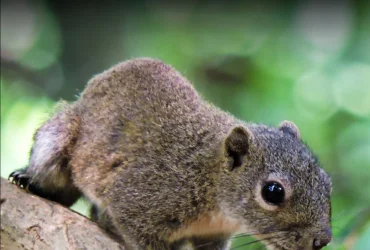 v10i1.248
v10i1.248ISSN: 1800-427X (print)
eISSN: 1800-427X (online)
DOI:10.47605/tapro.v10i1.248
Submitted date: 20 December 2020
Accepted date: 10 May 2021
Published date: 27 May 2021
Pp. 54–57.
Ichthyofauna of Maben Wathurawa Swamp Forest, southwestern Sri Lanka
K.H.M.A. Deepananda*, K. Wewalwala, P.K.W.I.N. Rathnayake, H.M.V. Udayantha, G.A.T.K. Yomal, R.B.D.D. Senarathne, A.U. Kuragodage & S.U. Thuduwage
*E-mail: ashoka@fish.ruh.ac.lk
In Sri Lanka, the highest number of endemic and threatened freshwater fish species is found in the south-west and most records are from outside the protected area network. They may therefore be severely impacted by anthropogenic activities. Forested streams support higher fish biomass than non-forested streams, and almost all the endemics are strongly associated with shaded habitats. The Maben Wathurawa Swamp Forest, has been proposed as a forest reserve for several decades but there is no information available on the ichthyofaunal assemblages in that forest.
Section Editor: Upali S. Amarasinghe
eISSN: 1800-427X (online)
DOI:10.47605/tapro.v10i1.248
Submitted date: 20 December 2020
Accepted date: 10 May 2021
Published date: 27 May 2021
Pp. 54–57.
Ichthyofauna of Maben Wathurawa Swamp Forest, southwestern Sri Lanka
K.H.M.A. Deepananda*, K. Wewalwala, P.K.W.I.N. Rathnayake, H.M.V. Udayantha, G.A.T.K. Yomal, R.B.D.D. Senarathne, A.U. Kuragodage & S.U. Thuduwage
*E-mail: ashoka@fish.ruh.ac.lk
In Sri Lanka, the highest number of endemic and threatened freshwater fish species is found in the south-west and most records are from outside the protected area network. They may therefore be severely impacted by anthropogenic activities. Forested streams support higher fish biomass than non-forested streams, and almost all the endemics are strongly associated with shaded habitats. The Maben Wathurawa Swamp Forest, has been proposed as a forest reserve for several decades but there is no information available on the ichthyofaunal assemblages in that forest.
Section Editor: Upali S. Amarasinghe
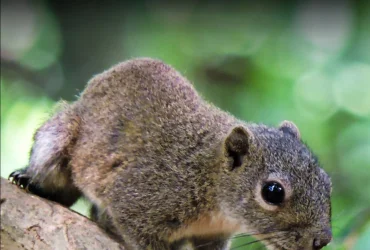 v10i1.247
v10i1.247ISSN: 1800-427X (printed)
eISSN: 1800-427X (online)
DOI:10.47605/tapro.v10i1.247
Submitted date: 25 December 2020
Accepted date: 23 March 2021
Published date: 27 May 2021
Pp. 47–53, pl. 10.
ABUNDANCE AND FEEDING HABIT OF SQUIRRELS (MAMMALIA: RODENTIA: SCIURIDAE) IN AN URBAN PARK, BANGLADESH
Tanvir Ahmed, Shimul Nath, Habibon Naher*, Hasanuzzaman Jowel & Shamima Nasrin
*Corresponding author. E-mail: likhi.habibon@gmail.com
Abstract
We studied population abundance and feeding habits of a native squirrel, Callosciurus pygerythrus, and an introduced squirrel, Funambulus pennantii, at Ramna Park in Dhaka City from November 2015 to April 2016. Altogether 459 squirrels were encountered comprising 167 (36.4%) encounters with C. pygerythrus and 292 (63.6%) with F. pennantii. The relative abundance of C. pygerythrus and F. pennantii were 7.0 and 12.3 individuals/km of transect respectively. Altogether 92 feeding occasions of squirrels were observed that included 29 occasions of C. pygerythrus and 63 occasions of F. pennantii. Both species had omnivorous diets while C. pygerythrus consumed more fruit (35% of all consumed foods) than F. pennantii (28% of all consumed foods). The diets of both species were highly correlated (X2=65.1, df=40, p=0.0073). Both intra- and inter-specific interactions at food sources revealed competition for limited resources in the park. Population monitoring and further research on various ecological aspects will help to understand their ecological adaptations to the urban setting and their roles in ecosystem health. This will inform management approaches for this important natural area in an urban setting.
Key words : Feeding habit, Ramna Park of Dhaka, Sciuridae, squirrel populations, urban biodiversity
Section Editor: Lee Harding
eISSN: 1800-427X (online)
DOI:10.47605/tapro.v10i1.247
Submitted date: 25 December 2020
Accepted date: 23 March 2021
Published date: 27 May 2021
Pp. 47–53, pl. 10.
ABUNDANCE AND FEEDING HABIT OF SQUIRRELS (MAMMALIA: RODENTIA: SCIURIDAE) IN AN URBAN PARK, BANGLADESH
Tanvir Ahmed, Shimul Nath, Habibon Naher*, Hasanuzzaman Jowel & Shamima Nasrin
*Corresponding author. E-mail: likhi.habibon@gmail.com
Abstract
We studied population abundance and feeding habits of a native squirrel, Callosciurus pygerythrus, and an introduced squirrel, Funambulus pennantii, at Ramna Park in Dhaka City from November 2015 to April 2016. Altogether 459 squirrels were encountered comprising 167 (36.4%) encounters with C. pygerythrus and 292 (63.6%) with F. pennantii. The relative abundance of C. pygerythrus and F. pennantii were 7.0 and 12.3 individuals/km of transect respectively. Altogether 92 feeding occasions of squirrels were observed that included 29 occasions of C. pygerythrus and 63 occasions of F. pennantii. Both species had omnivorous diets while C. pygerythrus consumed more fruit (35% of all consumed foods) than F. pennantii (28% of all consumed foods). The diets of both species were highly correlated (X2=65.1, df=40, p=0.0073). Both intra- and inter-specific interactions at food sources revealed competition for limited resources in the park. Population monitoring and further research on various ecological aspects will help to understand their ecological adaptations to the urban setting and their roles in ecosystem health. This will inform management approaches for this important natural area in an urban setting.
Key words : Feeding habit, Ramna Park of Dhaka, Sciuridae, squirrel populations, urban biodiversity
Section Editor: Lee Harding
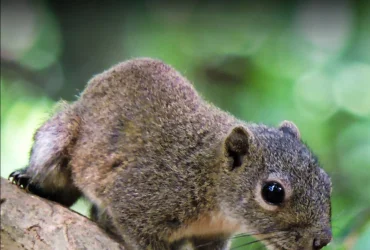 v10i1.246
v10i1.246ISSN: 1800-427X (printed)
eISSN: 1800-427X (online)
DOI:10.47605/tapro.v10i1.246
Submitted date: 17 November 2020
Accepted date: 3 May 2021
Published date: 27 May 2021
Pp. 39–46, pl. 9.
FIRST RECORD OF Pareas vindumi VOGEL, 2015 (REPTILIA: PAREIDAE) FROM CHINA WITH A REVISION TO MORPHOLOGY
Jian-Huan Yang*, Ho Yuen Yeung, Xiang-Yuan Huang & Shen-Pin Yang
*Corresponding author. E-mail: jhyang@kfbg.org
Abstract
We report the first record of the poorly known slug-eating snake, Pareas vindumi from China: a female specimen collected from Dazhuba ranger station, Gaoligongshan National Nature Reserve, Tengchong city, Yunnan Province. The newly collected specimen represents only the second known specimen of the species and provides the first and valuable data on its morphological variation. Based on the new specimen, we revise the diagnostic characteristics of the species and provide additional data on its natural history and conservation status.
Key words : molecular taxonomy, morphological variation, new record, Pareinae, slug-eating snake
Section Editor: Gernot Vogel
eISSN: 1800-427X (online)
DOI:10.47605/tapro.v10i1.246
Submitted date: 17 November 2020
Accepted date: 3 May 2021
Published date: 27 May 2021
Pp. 39–46, pl. 9.
FIRST RECORD OF Pareas vindumi VOGEL, 2015 (REPTILIA: PAREIDAE) FROM CHINA WITH A REVISION TO MORPHOLOGY
Jian-Huan Yang*, Ho Yuen Yeung, Xiang-Yuan Huang & Shen-Pin Yang
*Corresponding author. E-mail: jhyang@kfbg.org
Abstract
We report the first record of the poorly known slug-eating snake, Pareas vindumi from China: a female specimen collected from Dazhuba ranger station, Gaoligongshan National Nature Reserve, Tengchong city, Yunnan Province. The newly collected specimen represents only the second known specimen of the species and provides the first and valuable data on its morphological variation. Based on the new specimen, we revise the diagnostic characteristics of the species and provide additional data on its natural history and conservation status.
Key words : molecular taxonomy, morphological variation, new record, Pareinae, slug-eating snake
Section Editor: Gernot Vogel
Hubungi Kami
The ultimate aim of the journal is to provide an effective medium for communication of the latest and best scientific information.
Copyright © 2020 Taprobanica. All Rights Reserved
Jasa Pembuatan Website by IKT




